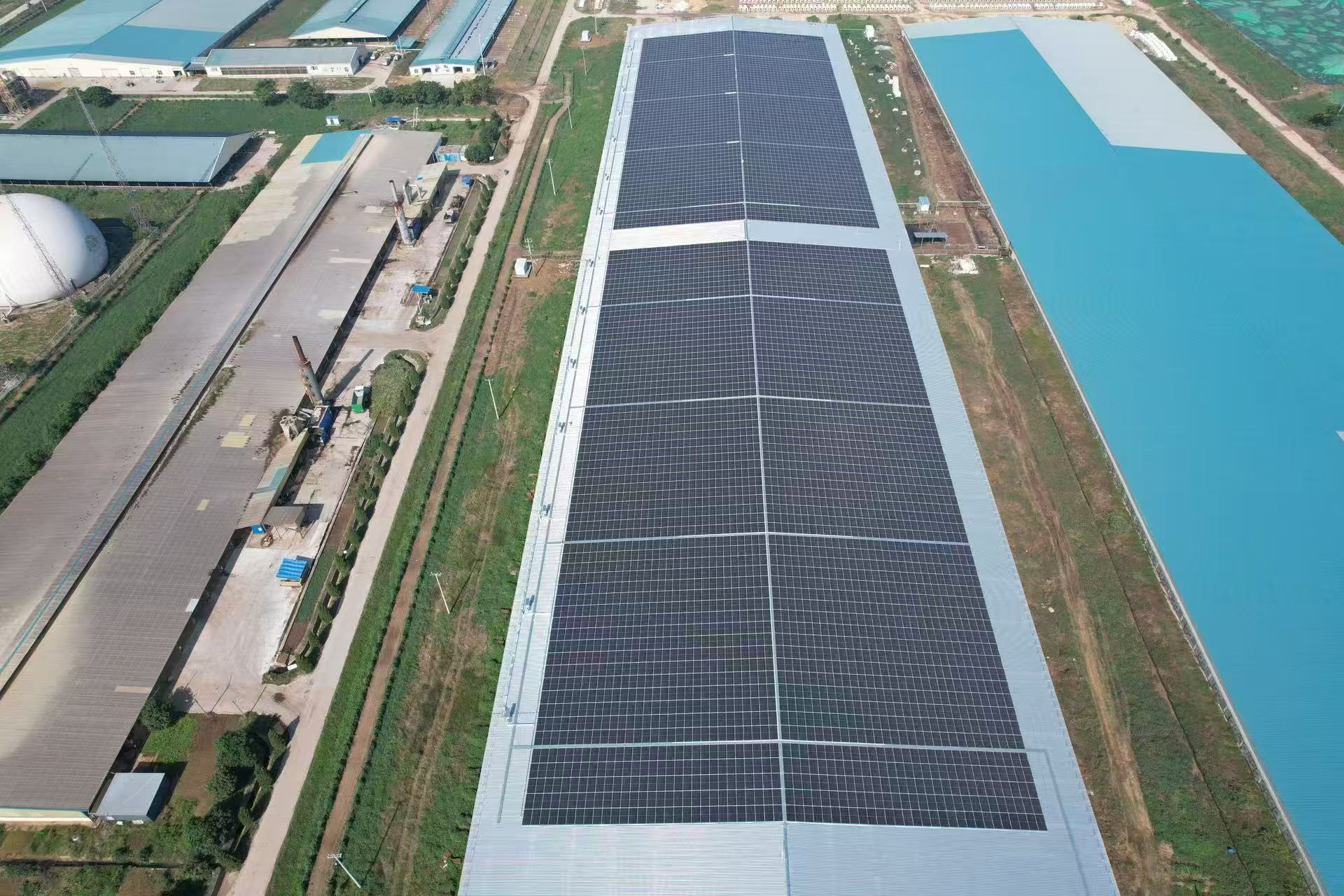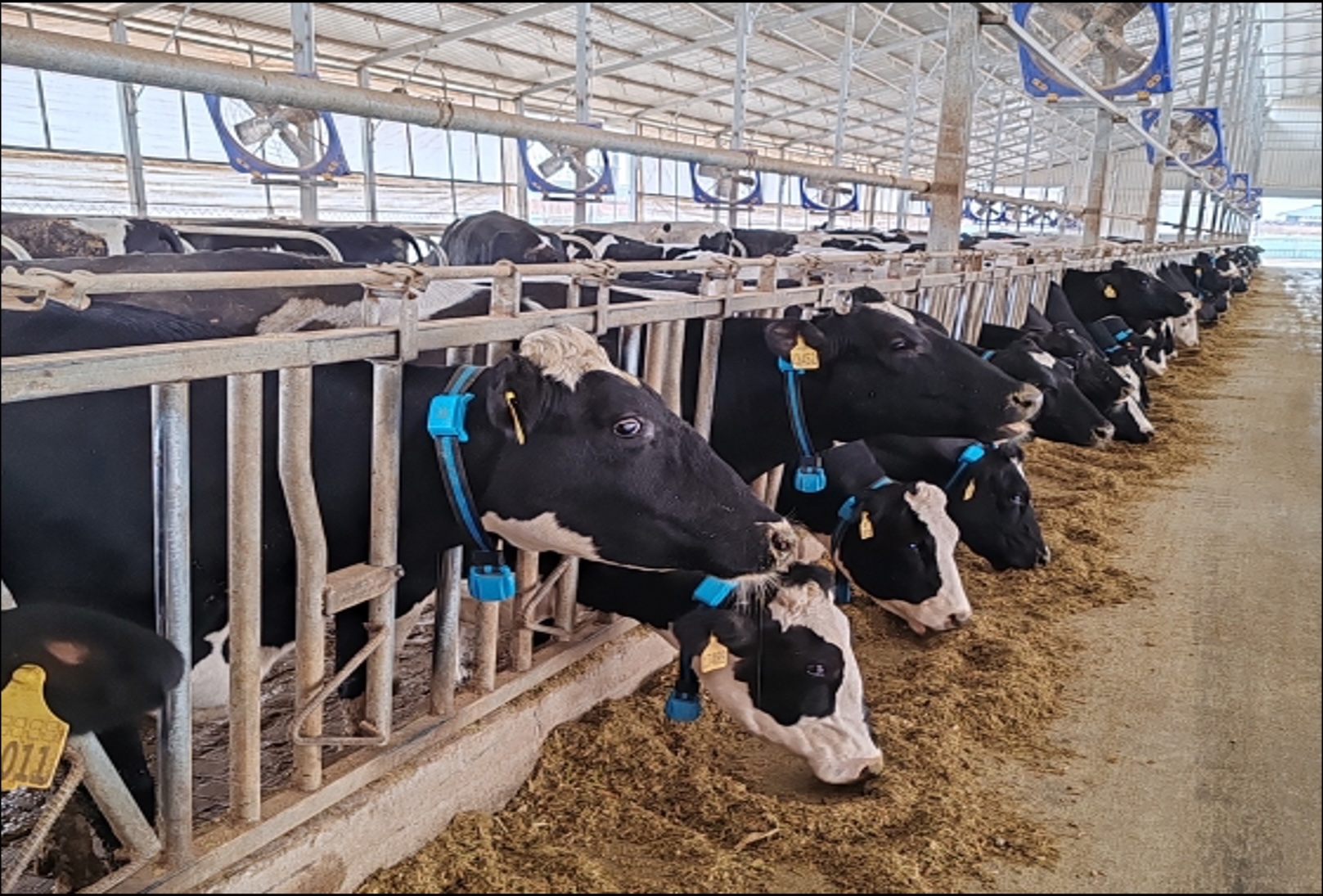Modern Dairy Carbon Emission Target
Modern Dairy launched the dual-carbon plan and set a quantitative target for carbon intensity emissions by 2035. Modern Dairy listed the ultra-large-scale farms and super-large-scale farms with low carbon emission intensity as the “carbon emission” model and star. “Energy saving and emission reduction” is incorporated into the strategic planning, aiming to provide a strong basis for the coordinated development of low-carbon and quality improvement and efficiency enhancement, and boost the confidence of the industry’s sustainable development.
The Company has set greenhouse gas (GHG) emission reduction targets and energy conservation and consumption reduction targets, and monitors the progress of these targets regularly.
Carbon emission per kilogram of FPCM in 2021 (base year): 0.9 Kg CO2e/Kg FPCM
- Taking 2021 as the base year, by the end of 2025, the Group’s carbon emission per kilogram of FPCM will be reduced by 7%, 0.85 Kg CO2e/Kg FPCM;
- Taking 2021 as the base year, by the end of 2030, the Group’s carbon emission per kilogram of FPCM will be reduced by 15%, 0.77 Kg CO2e/Kg FPCM;
- Taking 2021 as the base year, by the end of 2035, the Group’s carbon emission per kilogram of FPCM will be reduced by 20%, 0.73 Kg CO2e/Kg FPCM.
Among them, by the end of 2025,
- Achieve a 3% reduction in carbon emissions per kilogram of FPCM by enhancing digestion rates to intestinal fermentation and manure management;
- Achieve a 1% reduction in carbon emissions per kilogram of FPCM by optimizing the cattle herd structure, reducing calving intervals, and increasing the proportion of milkable cows;
- Achieve a 1.5% reduction in carbon emissions per kilogram of FPCM by upgrading energy facilities, implementing energy-saving measures, enhancing energy utilization efficiency, optimizing energy structure, and increasing the proportion of green energy sources;
- Achieve a 1.5% reduction in carbon emissions per kilogram of FPCM by optimizing manure management practices.
Methane emission per kilogram of FPCM in 2021 (base year): 0.67 Kg CO2e/Kg FPCM
- Taking 2021 as the base year, by the end of 2025, the Group’s methane emission per kilogram of FPCM will be reduced by 5.8%.
Among them, by the end of 2025,
- Achieve a 3% reduction in methane emissions per kilogram of FPCM by enhancing digestion rates, resulting in a 2.6% decrease in enteric fermentation methane emissions and a 5.2% decrease in manure management methane emissions;
- Achieve a 1% reduction in methane emissions per kilogram of FPCM by optimizing the cattle herd structure, reducing calving intervals, and increasing the proportion of milkable cows;
- Achieve a 1.8% reduction in methane emissions per kilogram of FPCM by optimizing manure management practices, reducing methane emissions from manure management by 7.9%.
Target Progress:
- 2022, the Company’s carbon emissions per unit of corrected milk (0.90 Kg CO2e/Kg FPCM) decreased by 1.1% compared to 2021
- 2023, the Company’s carbon emissions per unit of corrected milk (0.89 Kg CO2e/Kg FPCM) decreased by 2.2% compared to 2021
GHG Emissions KPIs:
- Greenhouse Gas Scope 1 and Scope 2 Emissions
| Year | Livestock Business Scope 1 and 2 Emissions (000 tCO2e) | Feed Production Business Scope 1 and 2 Emissions (tCO2e) |
|---|---|---|
| 2021 | 1,331.70 | 1,002.161 |
| 2022 | 2,057.60 | 7,237.47 |
| 2023 | 2,301.96 | 7,353.49 |
Note1: In 2021, the Scope 1 and 2 emissions for Modern Dairy’s feed production business only include emission data from the Shanghe farm feed factory. Emission data for the other four pressing plants are included in the emission data of their respective farms.
- Greenhouse Gas Scope 3 Emissions
| Year | Scope 3 Category | Emissions (tCO2e) |
|---|---|---|
| 2023 | Upstream Transportation and Distribution | 182,513 |
| Waste Generated in Operations | 68,450 | |
| Business Travel | 1,300 | |
| Employee Commuting | 9,024 | |
| Total | 261,287 |
| Energy Saving Targets | 2024 Target Progress |
|---|---|
| By 2024, the Group's existing steam equipment in its own farms will be renovated or updated, with a 2% reduction in energy consumption compared to 2023. | Completed |
| By 2025, the Group's existing steam equipment in its own farms will be renovated or updated, with a 2% reduction in energy consumption compared to 2024. | In Progress |
| By 2025, the number of electric milk tanker trucks will exceed 10. |
In Progress Four electric milk tanker trucks are in operation as of 31 December 2024 |
| By 2028, installed photovoltaic power generation capacity will reach 300 megawatts. |
In Progress 16 MW of photovoltaic power generation capacity has been installed and connected to the grid as of 31 December 2024 |
| By 2028, biogas production will reach 250 million cubic meters annually, generating 400 million kilowatt-hours of electricity per year. The use of biomass pellets will be completely eliminated, and 2.4 million cubic meters of digestate will be dried annually using renewable energy and residual heat for bedding material. |
In Progress Biogas production reached 189 million cubic meters, generating 115 million kilowatt-hours of electricity. 2.05 million cubic meters of digestate was dried using renewable energy and residual heat for bedding material. |
2024 Energy Conservation and Emission Reduction Practices
Section titled “2024 Energy Conservation and Emission Reduction Practices”- Photovoltaic Power Generation: Our 10-megawatt photovoltaic power generation project in Bengbu Farm was officially connected to the grid in 2024. By making full use of the south-facing roof space on our cow barns and installing high-efficiency photovoltaic modules, this project generates an average of 12 million kilowatt-hours of green electricity annually. This translates to an annual saving of 4,800 tons of standard coal and a reduction of 12,000 tons of carbon dioxide emissions, significantly lowering the carbon footprint of our agricultural operations. Adding this project to the previously completed 6-megawatt project in Hefei brings our total grid-connected photovoltaic capacity to 16 megawatts.
- Biogas Resource Utilization: We are committed to converting organic waste, such as cow manure, into valuable energy and resources, maximizing greenhouse gas emission reductions and achieving a circular economy. 19 of our farms are equipped with anaerobic digestion systems, 12 of which are currently generating biogas for electricity. The biogas digestate is used as fertilizer for returning nutrients to the fields, and the digestate solids are used as bedding material for the cows. The generated biogas serves multiple purposes: steam generation for heating in farm operations; drying digestate for use as bedding material; and electricity generation, with surplus power fed into the grid for additional revenue. In 2024, we continued to advance biogas resource utilization by expanding the anaerobic digestate tanks at our Baoji, Tongliao, and Chabei farms. This expansion is expected to significantly increase biogas production and utilization efficiency, further reducing our reliance on fossil fuels and lowering greenhouse gas emissions.
- Horizontal Centrifuge Optimization for Biogas Utilization: The implementation of horizontal centrifuge technology has significantly enhanced biogas utilization efficiency and substantially reduced our reliance on external biomass fuels. This process involves preheating the digestate, followed by centrifugal separation using a horizontal centrifuge to reduce moisture content. This, in turn, lowers the biogas demand for the subsequent drying process. Previously, supplemental energy from biomass pellet combustion was necessary to address biogas deficits. However, the increased efficiency achieved through biogas conservation has resulted in a 50% year-on-year decrease in biomass fuel procurement. In 2024, we installed horizontal centrifuges in 10 of our farms equipped with anaerobic digestion systems.
- New Energy Milk Transportation Fleet: We are actively transitioning our transportation fleet to electric vehicles to reduce operational carbon emissions. We are collaborating with suppliers to equip our new energy electric milk tanker trucks with the necessary charging infrastructure. Each electric milk tanker reduces carbon dioxide emissions by approximately 190 tons annually. In 2024, we put four electric milk tankers into operation.
- Yunyangniu Smart Cow Collars for Emission Reduction: In 2024, we deployed more than 60,000 Yunyangniu smart cow collars across our Modern Dairy farms. By monitoring key physiological data in real-time, these collars not only enhance farm efficiency but also contribute to reducing methane emissions. Following the implementation of smart collars, 20 farms have discontinued traditional tail chalking and visual heat detection practices. The 21-day pregnancy rate has increased by 3.9% and the 21-day insemination rate has increased by 6.7% compared to pre-implementation levels. The real-time data provided by the smart collars allows us to quickly and accurately detect estrus, optimize breeding timing, and improve conception rates, ultimately shortening the cows’ dry periods. Since dry cows do not produce milk but still emit methane, reducing this period lowers the methane emissions per unit of milk produced throughout the lifecycle. Furthermore, by integrating the collar system with milk yield data and intelligent grouping technology, we have enabled early disease detection and timely treatment. Healthier cows are more productive, further contributing to a reduction in methane emissions per unit of milk.

10 MW photovoltaic power generation project at Bengbu farm officially grid-connected

Over 60,000 Yunyangniu smart cow collars successfully deployed

